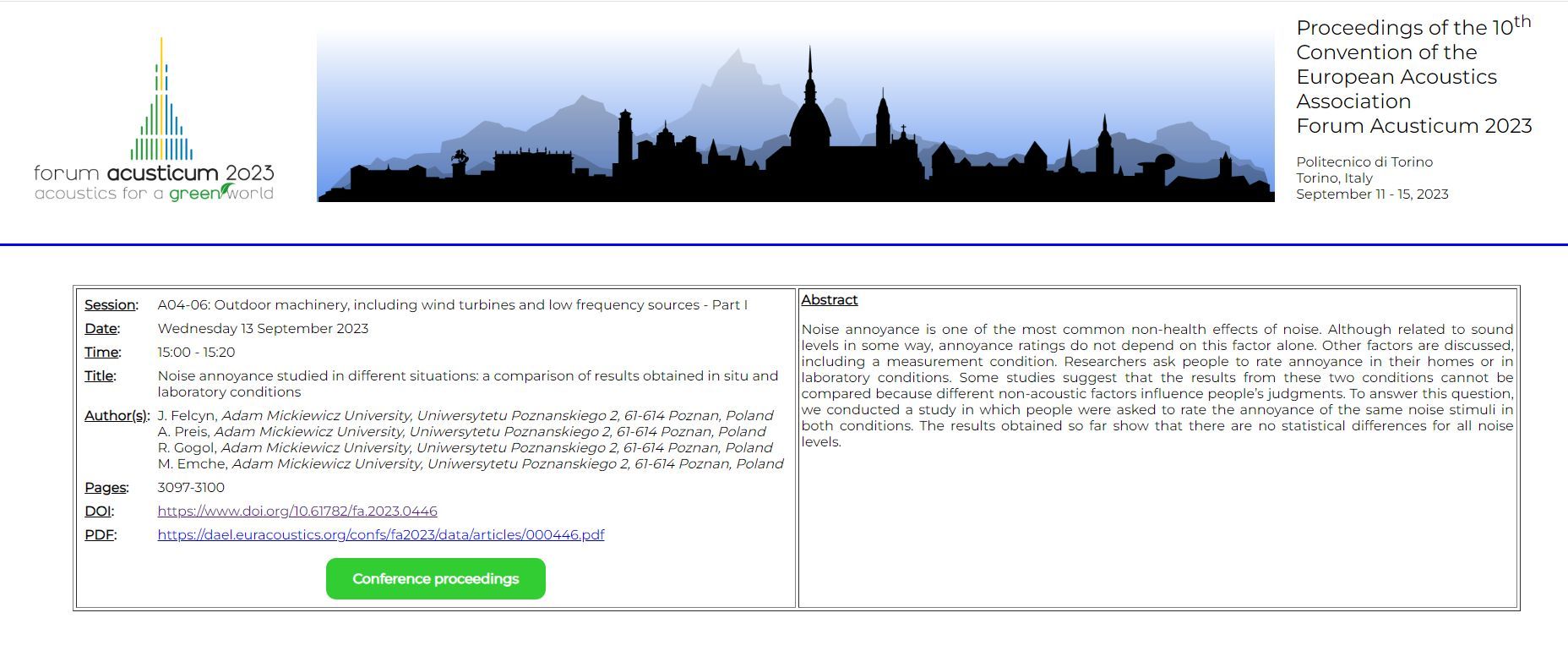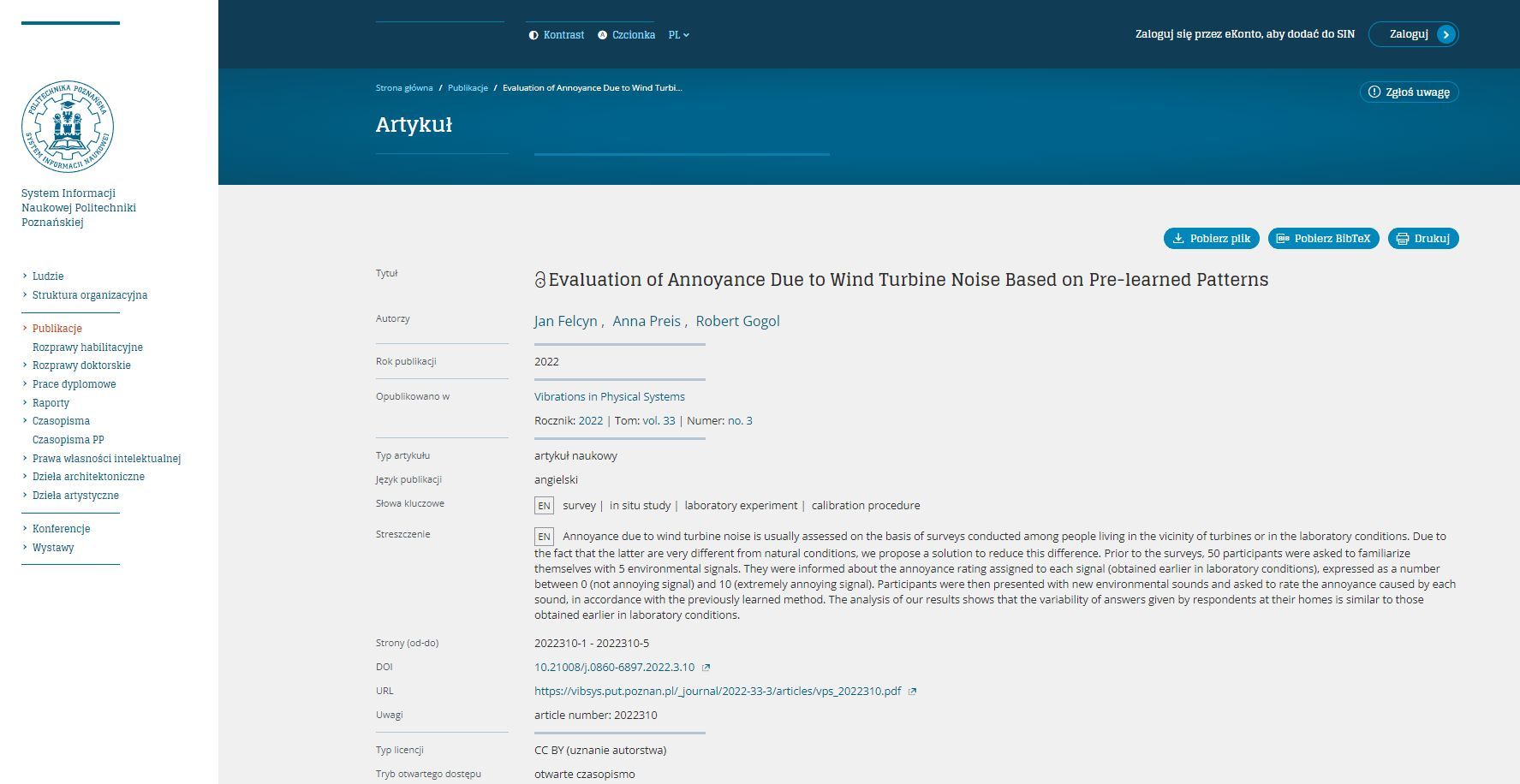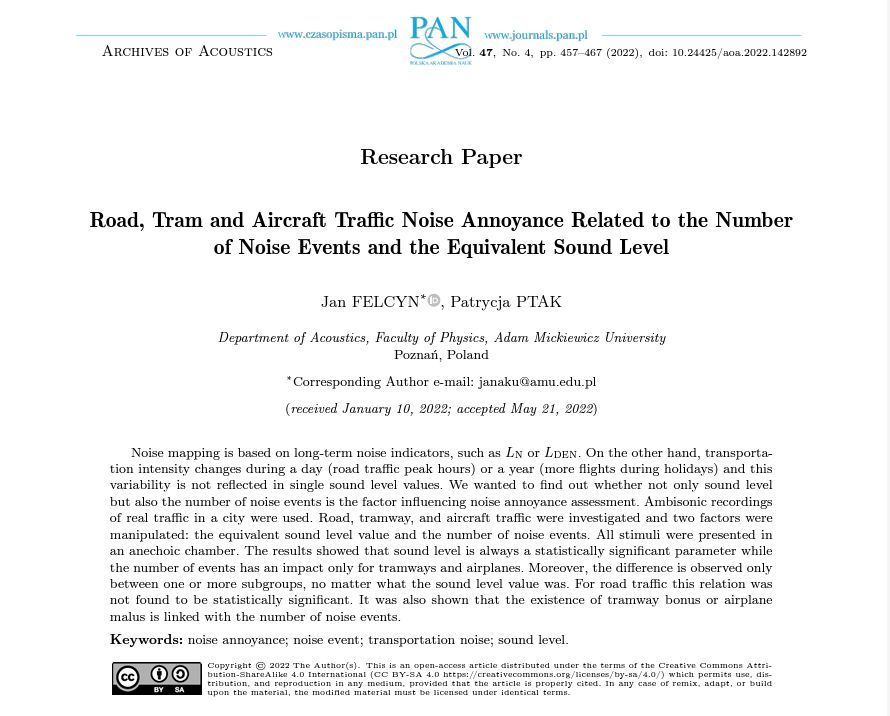12- Noise annoyance studied in different situations: a comparison of results obtained in situ and laboratory conditions
Noise annoyance is one of the most common non-health effects of noise. Although related to sound levels in some way, annoyance ratings do not depend on this factor alone. Other factors are discussed, including a measurement condition. Researchers ask people to rate annoyance in their homes or in laboratory conditions. Some studies suggest that the results from these two conditions cannot be compared because different non-acoustic factors influence people’s judgments. To answer this question, we conducted a study in which people were asked to rate the annoyance of the same noise stimuli in both conditions. The results obtained so far show that there are no statistical differences for all noise levels.



